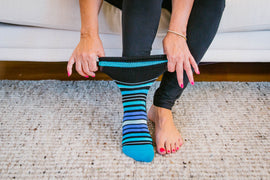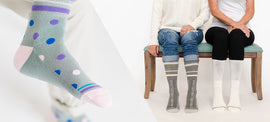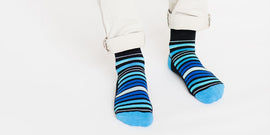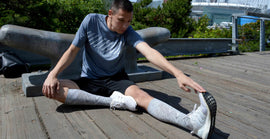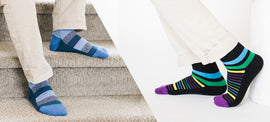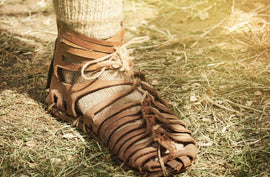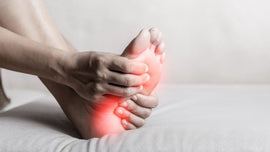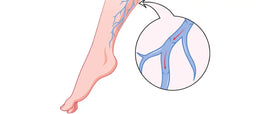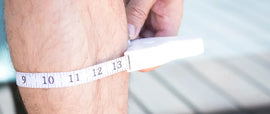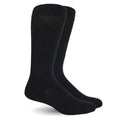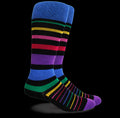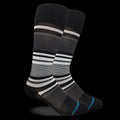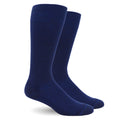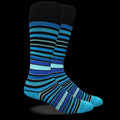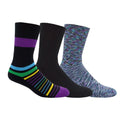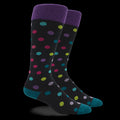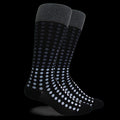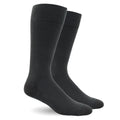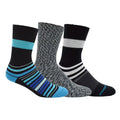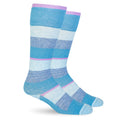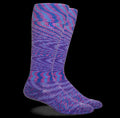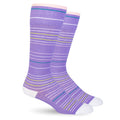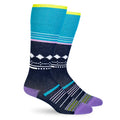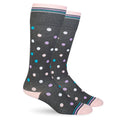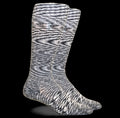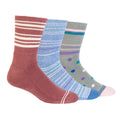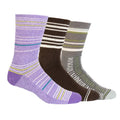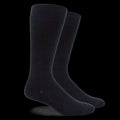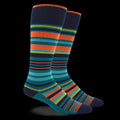How To Prevent Tired Legs
Posted by SIMON LIM

Do you often feel tiredness in your legs? Does it seem like the fatigue never goes away no matter how much you rest? If so, you're not alone.
Many people experience leg fatigue at some point in their lives. This blog post will show you how to prevent tired legs and keeping them feeling fresh and energized!
Causes of Tired Legs
Tired legs may result from a medical issue if the heaviness is accompanied by other symptoms and has no apparent reason or it can be caused by a series of other issues.
Some causes of fatigue and heavy legs include:
Leg fatigue is common after rigorous exercise, especially when a person works out more than usual.
Muscles, notably those in the lower body, cannot heal effectively without rest. Exercising too hard or without enough rest might cause tired, heavy legs. Proper rest lowers health issues and unnecessary stress on the body.
Workers who stand all day are also at risk. Tired, heavy legs are a common symptom. These people should take frequent rest to relax their legs and avoid injury.
A sedentary lifestyle can also lead to leg fatigue Legs can feel heavy if you sit all day or don't move. Resuming activities or taking regular breaks to stand and stroll can help.
Aching and throbbing legs are symptoms of RLS. It generally occurs at night and interrupts sleep. Moving the legs can bring brief alleviation.
Excessive exertion or improper muscle stretching might cause leg cramps. Cramping can cause little tics to severe pain and tired, heavy legs. Cramps should be rested until gone.
Legs with varicose veins can be heavy and tired. Those with this illness have poorly circulated veins. Blood that doesn't circulate pools down, causing veins to enlarge.
Hypokalemia, or a lack of potassium, can cause general body weakness and tiredness.
CVI causes impaired circulation due to weak veins and valves. Leg fatigue, edema, and varicose veins are symptoms. Standing for long periods, such as work, has been linked to an elevated risk of CVI.
Pregnancy can induce leg swelling, which is painful and causes fatigue. Leg swelling is caused by:
- Fluid retention
- Rising womb pressure
- Hormonal changes
Obesity is a medical disease caused by excess weight or body fat. Obese people may have fatigued, heavy legs. Weight gain exerts strain on lower body joints, tendons, and muscles.
Obese people have lower relative muscle strength in their legs than non-obese people. This lack of relative strength might cause leg fatigue.
PAD affects the body's veins and arteries. Fatty deposits in the arteries cause symptoms. Leg PAD symptoms include fatigued limbs and painful muscles due to reduced circulation in the lower body.
Muscle weariness is frequent in MS patients, especially in the legs. MS fatigue is caused by poor brain-muscle communication.
6 Easy Remedies for Tired Legs

You may be able to treat tired legs at home in many circumstances by using the following techniques.
It helps lymphatic drainage, boosts energy, and circulates lymphatic fluid. Dry brushing has the extra benefit of exfoliating your skin.
Natural-bristle brushes are ideal for this task. Ascend from your feet to your heart, working your way up.
Indulging in a warm bath will help you unwind and alleviate leg pain while promoting blood flow. Toss in 2 cups of sea salt, Epsom salt, or baking soda. At the very least, take a 20-minute bath.
Taking a foot spa can help alleviate aches, pains, and inflammation in tired feet.
Epsom salt, sea salt, and vinegar can all be added to a warm bath for a relaxing soak. At the very least, soak your feet for 20 minutes.
The following steps are included in this strategy:
- Rest. Rest your legs and take a break. Your body needs time to heal.
- Ice. For 20 minutes at a time, you can ice or immerse your legs in ice water. Take a few breaks during the day to perform this exercise.
- Compression. Reduce swelling in your legs by wrapping them in a compression bandage or wearing compression socks.
- Elevation. Swelling or discomfort can be minimized by elevating your legs with a few pillows.
In addition to relieving pain and swelling, this approach may enhance circulation.
An hour of massage may be just what you need to get your legs feeling better. Book a massage from an accredited massage therapist if you can. You can also use oil or ointment to massage your feet and legs.
Tired legs can be alleviated with a few simple exercises.
- Roll a tennis ball under your foot to get your feet moving while sitting.
- Roll your ankles one at a time in a clockwise direction. Make a circle on the floor and see what happens. It doesn't matter if you're seated or standing when you do this.
- Stand on your tiptoes and return both feet to the ground in an alternating pattern.
- Jumping jacks, squats, or jogging in place are good simple exercises to alleviate tired legs.
How to Prevent Tired Legs

If you often feel tiredness in your legs, you can do a few things to help prevent this.
First, make sure that you're getting enough rest. It is essential to give your body time to recover from physical activity. If you're not getting enough sleep, your body will not be able to heal correctly, which can lead to leg fatigue.
Another important tip is to stay hydrated. When your body is adequately hydrated, it functions more efficiently and has more energy. Make sure you're drinking plenty of water throughout the day, especially if you're active.
In addition to getting enough rest and staying hydrated, you can do a few other things to prevent leg fatigue. Here are a few additional tips:
- Elevate the legs to promote blood circulation.
- Change postures regularly as it may help tired, heavy legs. Changing positions more frequently helps enhance circulation and reduce weariness.
- Limit salt intake may help reduce leg edema caused by excess salt and fluid retention.
- Wear compression socks to help enhance blood flow in the legs. Compression socks can help fatigued legs in people who cannot take frequent breaks.
- Quit smoking. It may help relieve symptoms like tired legs, as smoking reduces circulation in the body.
- Lose weight. It can help those who are overweight or obese by relieving leg pressure and thus fatigue.
- Engage in regular exercise to improve blood circulation and reduce the risk of certain diseases.
- Have a rest day following rigorous exercise to help prevent overtraining and tired legs.
Key Takeaways
By following these tips, you can understand how to prevent tired legs and keep them feeling fresh and energized. Give them a try and see how they work for you!
SHARE:




